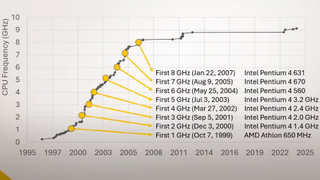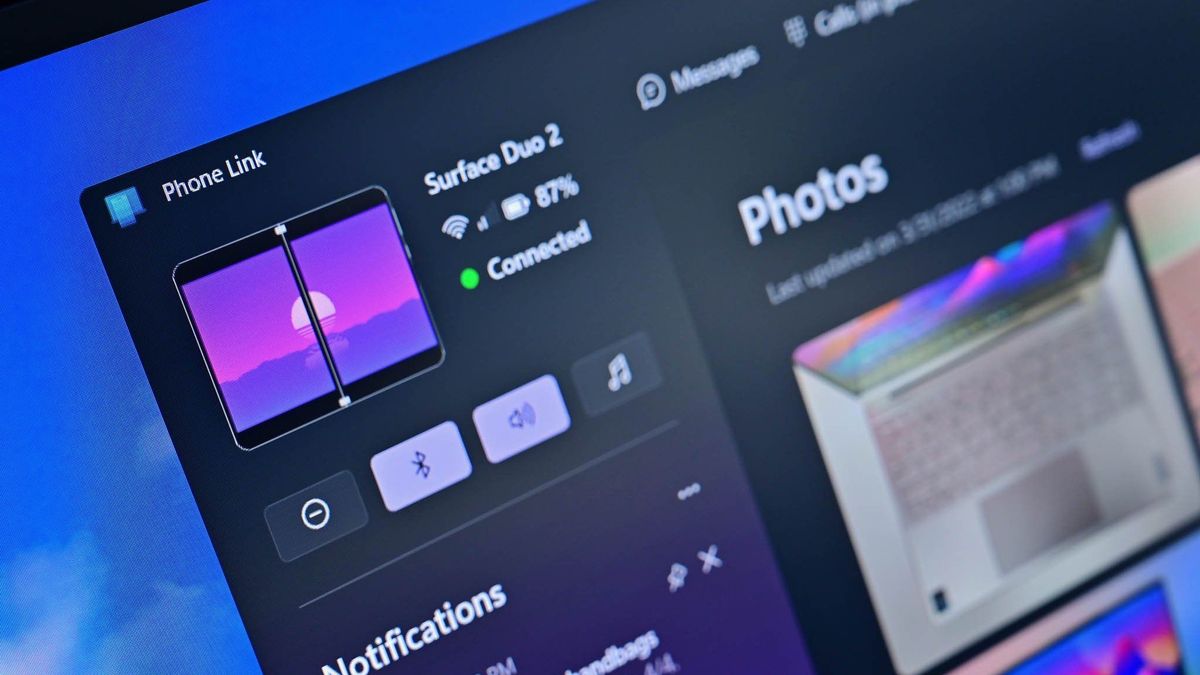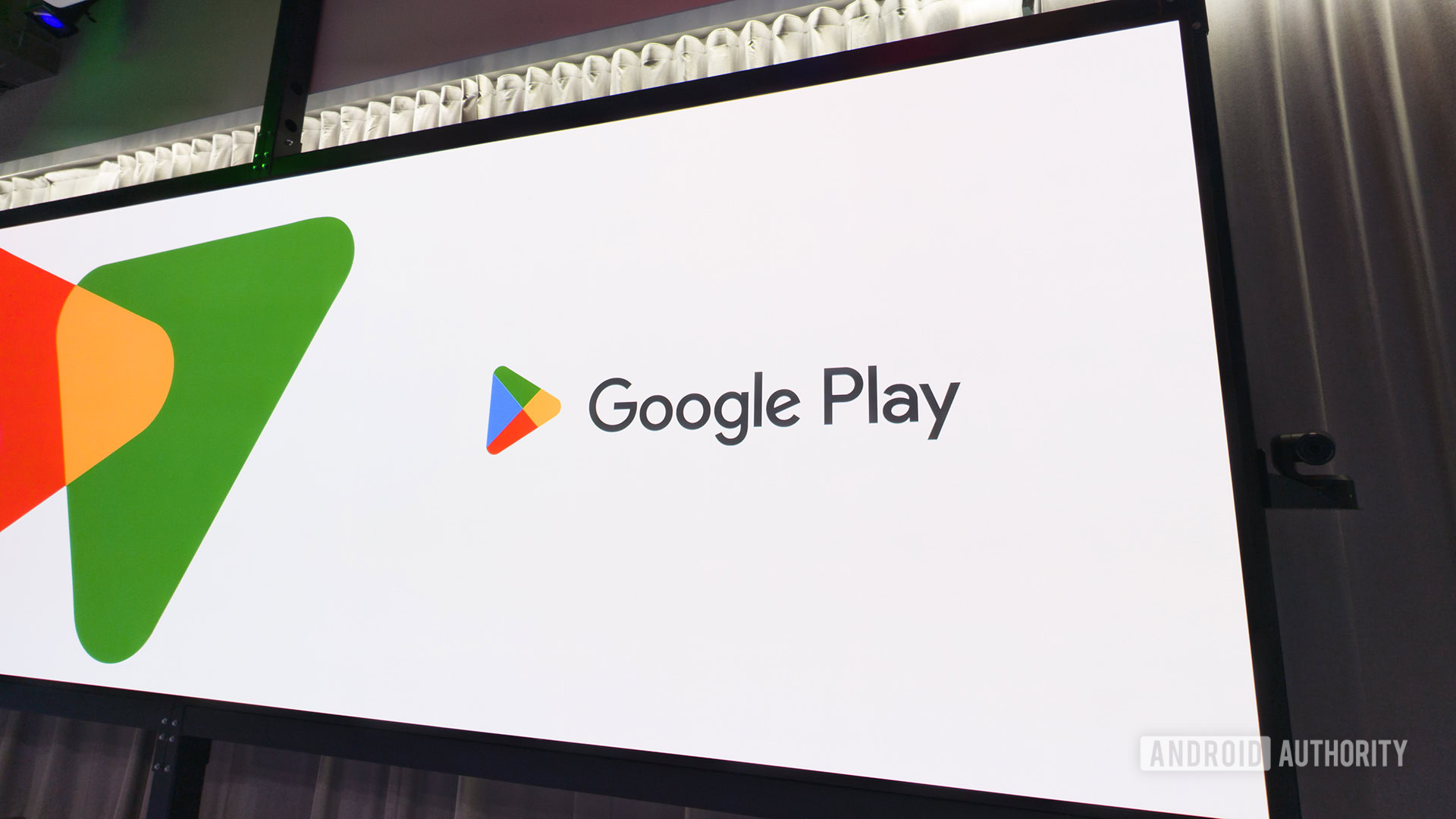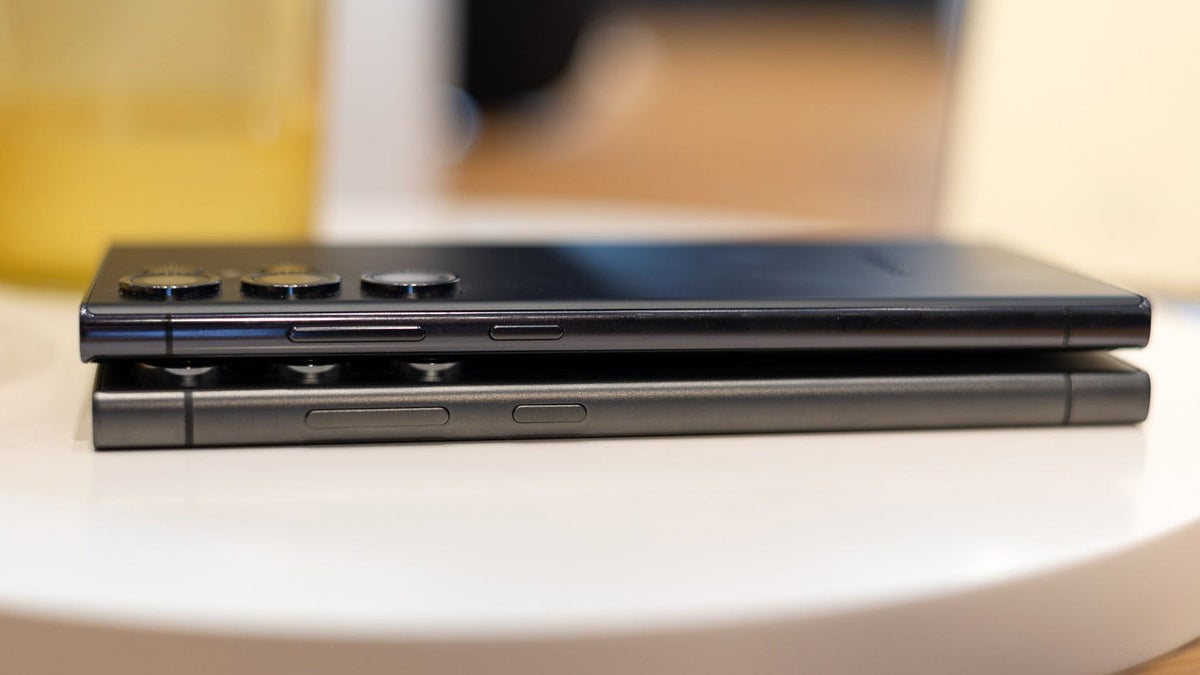From www.tomshardware.com

Not long ago, we covered a world record-breaking overclock of an Intel Core i9-14900KS reaching a whopping 9.1 GHz. In the time since, the team responsible were invited to Intel to hold an extended presentation on how they did it [h/t Skatterbencher]. It’s also worth noting that this impressive 9.1 GHz overclock was only achieved on a single P-Core of the Core i9-14900KS CPU in question. The full video presentation is embedded below, and also includes additional historical context and technical information on the achievement.
During the presentation, the most important elements for achieving a world record in CPU overclocking runs are given. These include the use of liquid helium cooling instead of the more well-known and common liquid nitrogen, but also a combination of extreme temperature management and sheer luck that are very difficult, expensive, or both to reproduce. If you’ve heard of the “silicon lottery” for achieving stable CPU/GPU overclocks, that couldn’t apply more to the arena of cutting-edge (but ultimately unstable in the long-term) OCs like this one. For example, the golden sample Core i9-14900KS being used is only 100 MHz better than other lottery “winners”.
As one may notice from either the presentation or the header image we used for this write-up, overclocking headroom has trended to a point of extremely diminishing returns since 2007, when 8 GHz was first achieved. While desktop CPUs are continually climbing in overall performance and out-of-box Boost frequencies, it seems obvious that we’re starting to run into some serious physical hardware limits trying to achieve 9 GHz and higher.
Even measuring CPU frequency accurately once you’re pushing it that high requires a great deal of expertise and even custom software, which SkatterBencher wrote for that exact purpose and discussed during the presentation. Moreover, with the “measuring it” problem potentially solved, it seems that 10 GHz and higher overclocks won’t be achieved on modern CPUs anytime soon.
Who knows, though? Maybe if binding CPUs with diamond becomes common, the toughest cooling and power limits can be overcome and bring us into the world of true 10+ GHz CPUs. In any case, we’re grateful to overclocking enthusiasts like SkatterBencher and ElmorLabs who chase these expensive and unwieldy world records. Here’s hoping we won’t be waiting much longer to see this “unbeatable” record broken, even if it’s just by a few hundred Megahertz.
[ For more curated Computing news, check out the main news page here]
The post Raptor Lake 9.1 GHz overclockers share secrets behind eclipsing a 17-year-old CPU frequency world record | Tom’s Hardware first appeared on www.tomshardware.com





/cdn.vox-cdn.com/uploads/chorus_asset/file/25546355/intel_13900k_tomwarren__2_.jpg)







